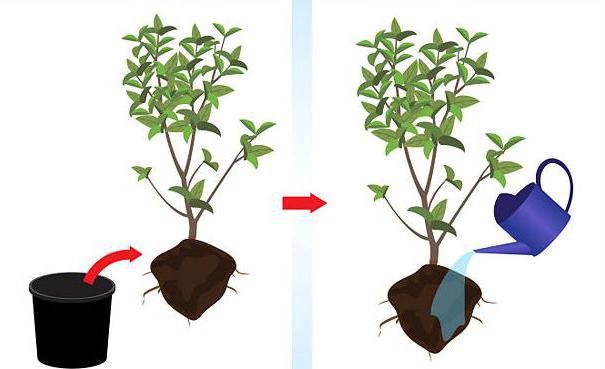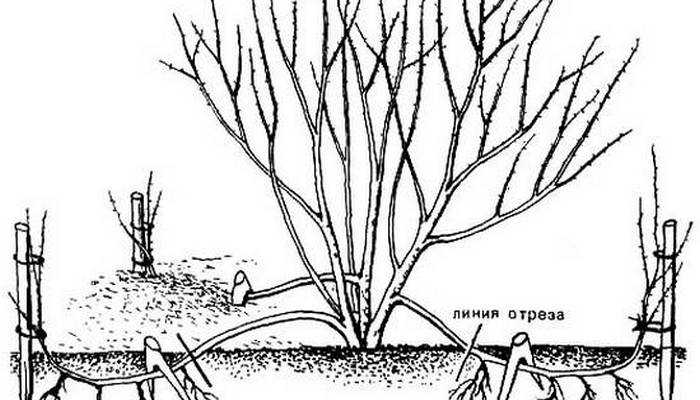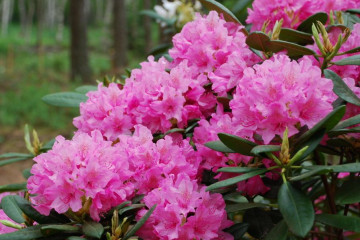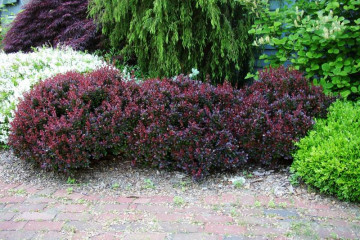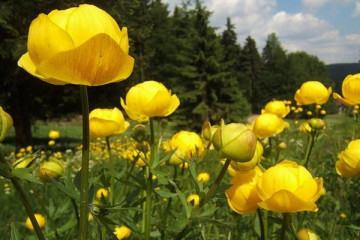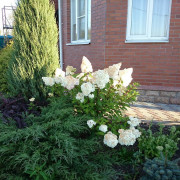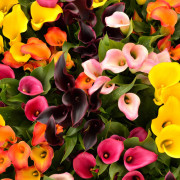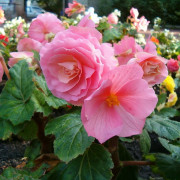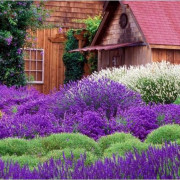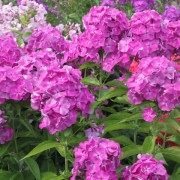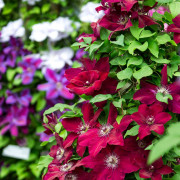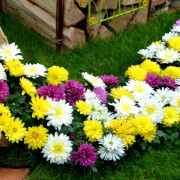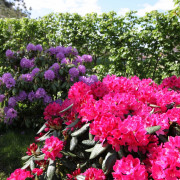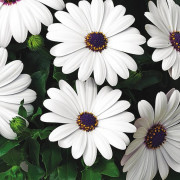Chubushnik snowbel - description, planting and care
Content:
If you like the charm of the thick aroma and extraordinary beauty of jasmine, then you can plant its "double" on your garden plot. Chubushnik snowbelle is individual both in its splendor and in bush compactness. Translated into Russian, there are several variants of its name: "snow beauty", "snow bell" or "snowball" - as you like. One thing unites them - beauty that is not inferior to real jasmine.
Description of chubushnik snowbel
The snowbelle mock-orange is mistakenly called garden jasmine; it is actually a variety of Philadelphus, belonging to the Hortensiev family. Growth is usually short, up to 1.5 meters. It is interesting that the crown in the circle corresponds to its height, so it looks like a white bell or a fluffy snowball.
Blossoming occurs in the form of double white flowers, exuding a delicate aroma, very similar to the scent of jasmine. Buds 2-3 cm in diameter appear on last year's shoots. Blooms until mid-June, starting in May.
The plant is not very demanding both in terms of soil composition and in general care. It perfectly tolerates droughts and frosts, and there is also a huge plus - it is not afraid of urban gas pollution.
But not everything is perfect. Chubushniki do not tolerate waterlogging, and are afraid of rising groundwater. At the same time, although they are photophilous, they can withstand shading from neighboring trees quite calmly. True, with excessive shade, increased shoot growth begins. They rush upward, restraining the beautiful splendor of color.
Planting a plant
In the gardens of Russian open spaces, the common wreath snowbelle is planted more often than others. First of all, a sunny place stands out and the season is chosen: either in early spring, long before the buds swell, or at the very beginning of autumn.
It is necessary to maintain a distance of at least 1 m to other plantings growing nearby. If the goal is to acquire a hedge, then these intervals can be narrowed to 0.5 m.In advance, two weeks before the planned planting, it is necessary to prepare a deepening of 50 by 50 cm for each bush.In the case of a flower fence, a trench is prepared instead of a pit.
In heavy soil, the last layer is laid out with drainage from gravel. Next, fill it with three parts of earth with foliage, one part of humus and two parts of sand. You need to be very careful about the root collar of the seedling, which should not be buried far, up to 2 cm is enough to avoid decay. Watering the near-stem circle of the plant very generously, it is required to cover it with mulch.
Planting from seeds
Growing from seed requires the right approach, which should be read in more detail:
- seeds can be harvested after ripening or purchased. It is supposed to sow them at the very beginning of spring - this is in the last days of February or in the first days of March;
- before sowing, prepare the soil from three essential components: sand, humus and peat chips;
- pre-selected seeds in an elastic stocking are dipped into a prepared solution of water with the addition of a growth stimulator. And stand for at least three hours;
- after that, without removing it from the stocking, it is placed in the sawdust for another two days;
- after the expiration of time, take out and dry;
- grooves are made in containers prepared in advance, moisten the soil a little and plant seeds at a distance of every 5 cm;
- then sprinkle with peat on top, moisten slightly again and calmly wait for the emergence of shoots;
- when the first leaves appear, the plants are moved in different cups and already grown on the balcony until they reach 30 cm up;
- the main thing is to monitor the humidity so that the earthen lump does not dry out.
Before planting in the ground, the seedlings are taken out into the air so that they become hardened. Having got used to it, they can stay for a day in their natural environment.
Planting seedlings in open ground
It is necessary to immediately take care of creating comfortable conditions for a favorite plant, and then it will delight from 25 to 35 years. Three important points serve as a kind of foundation:
- selected landing site;
- the soil itself and the potting soil used;
- distance and depth.
The choice of "personal" territory
The best place would be a quiet place with excellent lighting until lunchtime. There may be a slight partial shade in the middle of the day. You need to choose the south side of the garden. It would also be desirable to make sure that the groundwater does not exactly lie to the surface of the earth within 150 cm.
Acidity also plays a role
Clay soil is not suitable at all, it requires powerful drainage and a very "light" soil mixture. If the soil is sandy loam, then drainage is not required, moreover, some of the sand will have to be changed to garden soil.
Maintain distance
Planting proximity is calculated directly from the plant species. Usually it ranges from 80 to 140 cm. If it is planned as a hedge, then from 60 to 80 cm. Up to 3 cm deep.
How to care for
The plant requires some care.
Watering
When planting is complete, water should be abundant. At least 30 liters at a time. If the weather is rainy, then once every 7 days, and when there is a drought, then every other day. Leaves serve as a visual indicator of the degree of moisture in the earth, which droop sharply if there is not enough moisture.
Top dressing
During the first time, there is no urgent need for it. This can damage until the roots are fully developed. A year later, the mock-orange is fed: a whole bucket of prepared nitrogen liquid for all the bushes. Even if the shoots have already been cut, the “feeding” process continues.
Pruning
Annual shoots of jasmine are used to lay flower buds. Immediately after flowering, it should get rid of all branches with dried inflorescences so that all the forces of the plant are directed to the development of fresh shoots. Before winter, they get rid of excess branches to form a neat crown. And, of course, all damaged shoots are removed. Thanks to pruning, it is possible to "revive" a withering old bush. It is enough with the beginning of early spring to cut all branches to the root to the maximum, keeping only a few of the most durable ones. Prudently reducing them to about 30 cm.
The discouraged buds on these stumps will wake up, and young shoots will appear, which in the future will form such an attractive crown.
Reproduction methods
Garden jasmine reproduces in two ways: vegetative and seed. But with the second, usually the varietal characteristics of the plant are rarely preserved, therefore the first option is more reliable - by propagation by layering or green cuttings.
Cuttings
For example, on the advice of experienced gardeners, you can do it like this. In one-year well-developed shoots, carefully cut off the tops of no more than 15 cm. Tear off all the lower leaves from the cuttings. Put them in cups slightly filled with loose natural ingredients. Cover with a cap from a regular plastic bottle. Do not forget to water, be sure to ventilate and spray in good faith. With the appearance of green leaves on the cuttings - transplant.
Layers
It is not difficult to propagate by branches. First, you need to slightly dig in the young shoot located below. The top, in a segment of about 20 cm, remains on top "free". Watch out for the area where the twig is covered with earth so that it is always moderately humid there. Then, when the shoot takes root, it is cut off and, together with the adhering earthy lump, is planted in a separate hole.
Diseases and pests
Fungal diseases can affect garden jasmine if the care is not carried out properly. Septoria spotting and common gray rot are more common than others. This natural beauty can be attacked by spider mites, aphids, weevils, and hawthorns. Preventive spraying of the entire garden during the swelling of the buds will help to avoid this.
Preparing for winter
Since autumn, the root system requires insulation with a layer of humus, or compost can be used. To increase frost resistance, you should use the addition of potassium-phosphorus fertilizers. Coconut felt laid on the ground will serve as an excellent insulation. As snow appears, plants are poured over them until they gain size. In severe frosts, some varieties lose branches that are above the snowdrift. But that's okay. The bushes of heat-loving mock-mushrooms can be covered entirely. In the spring, as soon as the sun warms up, they get bored.
Use in landscape design
According to the description, the chubushnik snowbelle coronarius stands out especially strongly among all varieties. It is about 1.5 m wide and up to 2 m high. Terry flowers have a diameter of 4 cm and look like balls, forming brushes of 7 pieces. Dazzling white color and a very delicate unobtrusive aroma that cannot be confused with anything. Flowering lasts for 3 weeks, capturing mid-summer.
Philadelphus snowbelle is an extremely popular variety among garden jasmine. Good for use as a living fence, and is also able to adequately decorate any urban area, including boulevards, squares, parks.
Chubushnik corona snowbelle bears the title of king of garden shrubs. The status was obtained due to unpretentiousness, special beauty of flowering and durability. In the garden, he is incomparable in the romantic and landscape beauty of the spectacle.
The perennial snowbell shrub looks very impressive against the background of red brick buildings. Low-growing varieties around the backyard ponds will perfectly decorate the area, or they will worthily occupy a strip under large trees in the lowest tier. Varieties of two or three meters in height form a magnificent hedge that blooms even after pruning. Such a hedge is very popular, arches and secluded gazebos will play differently with this decor.
Thus, the chubushnik is such a versatile plant that it can do any function for an original decorative decoration. At the moment of flowering, garden jasmine will fill everyone with positive emotions, and the unique aroma will give a sense of harmony.

